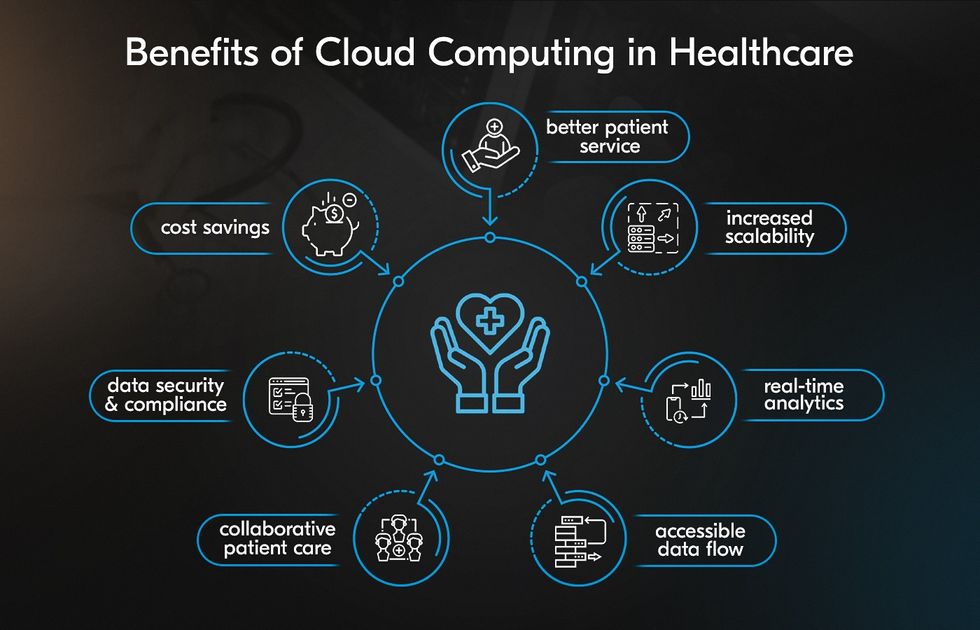The evolution of technology has revolutionized countless industries, and the field of end-of-life care planning is no exception. As the needs of modern families shift, professionals in this space are increasingly turning to cloud-based systems to meet demands for efficiency, accessibility, and personalization. For those seeking innovative ways to plan for the future, these platforms provide an adaptable and reliable framework to manage the complexities of end-of-life arrangements.
End-of-life care encompasses more than medical considerations. It involves planning for legacy preservation, financial matters, and ensuring that final wishes are respected. Cloud-based solutions are proving invaluable in streamlining these multifaceted tasks, especially as users prioritize convenience, security, and accessibility.
Accessibility and Convenience
Cloud-based platforms excel at meeting the modern user’s expectations for accessibility and ease of use. Families and individuals can now manage end-of-life planning documents, preferences, and services from anywhere in the world. This global access is particularly beneficial for those with family members spread across different locations, ensuring that everyone stays informed and aligned, regardless of time zones or geographic barriers.
The flexibility offered by these systems allows users to make adjustments as life circumstances change. Whether it’s updating a living will, revising power of attorney documents, or selecting new service providers, cloud-based platforms empower users to maintain control over their plans without the need for in-person consultations or cumbersome paperwork.
Sustainability and Environmental Considerations
As sustainability becomes a growing concern, cloud-based systems provide an eco-friendly alternative to traditional paper-based processes. The reduction in physical documentation not only minimizes waste but also streamlines operations for both users and service providers.
End-of-life care is also adapting to meet the preferences of environmentally conscious individuals. For example, platforms can facilitate the planning of sustainable options like green burials or direct cremation. By offering these choices in a user-friendly digital format, cloud-based systems ensure that individuals can align their plans with their values.
Enhanced Collaboration
Planning for end-of-life arrangements often involves collaboration among family members, healthcare providers, legal representatives, and service providers. Cloud-based systems foster seamless communication by centralizing information in a secure digital space. This eliminates the confusion and inefficiencies that can arise when details are scattered across different formats and locations.
For families, this collaborative capability provides peace of mind. They can rest assured that everyone involved has access to the latest updates and can contribute to the planning process in real time. Similarly, professionals involved in end-of-life care can coordinate more effectively, ensuring that their services align with the individual’s wishes.
Advanced Security Measures
One of the primary concerns surrounding end-of-life planning is the security of sensitive personal and financial information. Cloud-based platforms have risen to this challenge, implementing advanced encryption and authentication measures to protect user data. These systems are designed to meet stringent compliance standards, ensuring that information remains confidential and secure.
For users, this level of security fosters trust and confidence. They can upload and manage critical documents, such as advance directives and estate plans, knowing that their privacy is safeguarded. This reassurance is particularly important for younger, tech-savvy audiences who value transparency and accountability in digital services.
Integration with Modern Tools
Cloud-based end-of-life care planning systems are increasingly integrating with other digital tools to offer a holistic experience. Features like digital vaults for important documents, AI-driven recommendations for service providers, and automated reminders for key updates make these platforms indispensable.
In addition, many systems now offer integration with wearables and health monitoring devices, enabling users to align their healthcare directives with real-time data. These tools provide an added layer of personalization, ensuring that care plans reflect the individual’s current needs and preferences.
For professionals, such integrations allow them to offer more tailored services. Healthcare providers, for example, can access a patient’s updated care directives directly from the cloud, reducing the risk of miscommunication and ensuring that treatments align with the patient’s wishes.
Meeting the Needs of Modern Users
The shift toward cloud-based systems is driven by the expectations of a digital-first audience. Today’s users prioritize speed, convenience, and adaptability. They are accustomed to managing their lives through apps and online platforms, and they expect the same level of sophistication in end-of-life care planning.
For younger audiences in particular, these systems offer a practical solution that aligns with their digital lifestyles. They appreciate the ability to manage everything from financial arrangements to memorial preferences in one cohesive platform. Additionally, the transparency and user-friendliness of cloud-based systems make them an attractive choice for individuals seeking clarity and control over their plans.
Future Trends in End-of-Life Care Planning
The continued advancement of technology promises even greater innovation in the realm of end-of-life care planning. AI and machine learning are poised to play a significant role in personalizing and automating aspects of the planning process. For example, predictive analytics could help users identify potential gaps in their plans, while virtual reality tools could provide immersive previews of memorial services or burial sites.
Moreover, as blockchain technology matures, it may be integrated into cloud-based systems to further enhance security and transparency. Blockchain’s ability to create tamper-proof records could be invaluable in preserving the integrity of critical documents and ensuring that final wishes are carried out as intended.
Building Trust in Digital Solutions
For cloud-based systems to thrive, building trust is essential. Providers must prioritize user education, demonstrating the benefits of digital platforms while addressing common concerns about privacy and reliability. By offering robust customer support and transparent policies, they can foster confidence among users of all ages.
The language used by these platforms also plays a critical role in connecting with their audience. By employing clear, empathetic, and inclusive communication, providers can ensure that their services resonate with users navigating sensitive and deeply personal decisions.
Embracing Innovation for a Better Future
The adoption of cloud-based systems in end-of-life care planning represents a pivotal step forward for individuals and families seeking greater control, convenience, and security. By embracing these innovative tools, users can ensure that their plans reflect their values and priorities, while professionals can deliver more personalized and efficient services.
As technology continues to evolve, the possibilities for enhancing end-of-life care planning are virtually limitless. From integrating emerging tools to addressing the unique needs of modern users, cloud-based systems are shaping a future where end-of-life arrangements are more accessible, transparent, and aligned with the complexities of contemporary life.




